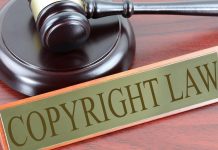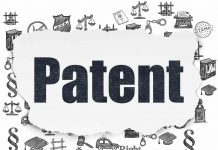This article is written by Amrit Kaur, a student of Dr. B.R. Ambedkar National Law University, RAI, Sonepat. The article talks about the UK and USA’s intellectual property laws and systems and the related aspects.
Table of Contents
Introduction
Intellectual property refers to the creations which have been developed by the author using his intellect, e.g.- literary works, artistic works, designs, symbols, etc. Meanwhile, intellectual property rights are the rights granted to individuals over their intellectual inventions. Usually, the intellectual property rights are granted for a set period to the author. These rights offer the authors exclusive rights over their invention. Intellectual Property encompasses a wide variety of activities and is vital to both cultural and economic life. Various laws that safeguard intellectual property rights acknowledge this relevance.
Intellectual property rights have long been acknowledged by several legal systems. Patents to protect inventions, for example, were awarded in Venice as early as the fifteenth century. The Paris Convention for the Protection of Industrial Property (1883) and the Berne Convention for the Protection of Literary and Artistic Works (1886) was the first modern attempts to safeguard intellectual property via international law. Today there are more than 25 international treaties based on intellectual property rights which are overseen and managed by World Intellectual Property Organisation (WIPO). Even Article 27 of the Universal Declaration of Human Rights (1948) talks about protecting intellectual property rights.
Human development and well-being are dependent on our ability to generate new ideas and inventions. Technological growth necessitates the creation and implementation of new inventions, while a dynamic culture is always looking for new methods to express itself. Thus, intellectual property rights are quite important in today’s ever-changing world. They are important also because inventors, artists, scientists, and companies devote a significant amount of time, money, energy, and effort to the development of their ideas and products, and to motivate them to do so, they must be able to earn a reasonable return on their investment. This return entails granting them the right to safeguard their intellectual property.
Different categories of Intellectual Property
Intellectual Property is divided into two main categories:
- Copyright and the related rights
- Industrial Property
Copyright and the related rights
The rights of the creators of creative and artistic works like paintings, books, sculptures, films, etc. are protected by the right of copyright up to 50 years after the death of the creator.
The rights of performers (e.g. actors, singers and musicians), phonogram manufacturers (sound recordings), and radio broadcasting companies are also protected by copyright and the related rights (often referred to as “neighbouring” ones). The fundamental societal aim of copyright protection and associated rights is to promote creative effort and to reward it.
Industrial Property
Industrial Property can be further divided into two main categories:
The first category is defined as the protection of distinctive signs, specifically, trademarks (that differentiates between the goods or services of one organization and that of other organizations) and geographical indications (which indicates a good as originating in a particular place and its characteristics primarily based on its that particular geographical location).
Other industrial property categories are largely safeguarded to promote innovation, design, and technological development. Inventions (covered by patents), industrial designs, and trade secrets come within this category.
Common types of Intellectual Property Rights
Copyright
Copyright refers to the right given to the creators of literary and artistic works. Copyright is generally granted for the works like books, songs, web content, paintings, etc. In simpler terms, copyright does not protect the original idea of the author but it protects the form in which the idea has been expressed. Copyrights, with a few exceptions, provide the owner of the protected material, the authority over the work’s reproduction, performance, new versions or adaptations, public performance, and distribution of the work.
Patent
Patents are one of the most commonly used intellectual property rights. They are used to protect creative ideas or processes which are novel, beneficial, and unobvious. Nowadays even newly developed plant species, or strains, are being protected by patents. A patent gives the patent holder the authority to decide if others can utilize the innovation and if they can, then how. In return for this privilege, the patent holder makes technical data about the invention publicly accessible in a published patent document.
Trademarks
Trademark refers to a sign which helps one to distinguish the product and services of one organisation from that of another. It includes signs, symbols, logos, words, phrases, etc.
Design Rights
Design Rights protect designs such as drawings and computer models, etc.
Trade Secrets
Trade secrets include the manufacturing procedures, systems, equipment, formulae, strategies, and other information which is very confidential and exclusive to the organisations using them. Trade secrets act as competitive advantages for the business. They provide a competitive edge to the organisations using them.
Intellectual Property Rights in the UK
In the UK, two types of protection are generally provided on intellectual property rights depending on the creation of the author. These two types of protection are as follows:
Automatic Protection
In this, the person need not apply for the right but is provided automatically with the creation of the product itself. The types of protection under it include copyright (which includes art, literature, sound recordings, music, TV, films, web databases or contents, and photography) and design rights that are given for the shape of the objects.
Protection to be applied for
In this, the person does not get the protection automatically but he/she has to apply for it. The types of protection under it include trademark, registered designs, and patents.
- Trademarks have to be applied for intellectual properties like product names, logos, and jingles (a brief tune or song for commercial purposes and publicity). These have to be applied within four months of the creation of the intellectual property.
- Registered designs have to be applied for intellectual properties like the product appearance which includes structure, packaging, designs, colours, and decor. The period to apply for the same is one month after its creation.
- Patents have to be applied for intellectual property like inventions and products, including machines, tools, etc. The same can be applied within 5 years after the creation of the intellectual property.
These types of intellectual properties are not to be disclosed to anyone and are to be kept secret but if a situation arises that the idea needs to be discussed with someone, a non-disclosure agreement should be used.
Intellectual Property regime in the UK
In the UK, there are different provisions and acts for different Intellectual Property rights. These are as follows:
Patents
- In the UK, the rules and regulations relating to patents are governed by the Patent Act of 1977. It also incorporates the European Patent Convention (1973). According to the Act, for a patent to be issued for an invention, the invention must be novel, must include an innovative step, and must be capable of industrial application.
- The patent application will be denied if any of the preceding requirements are not met.
- Aside from that, if commercial use of the invention violates public policy or morality, the patent will not be issued. Also, a patent application can be withdrawn at any moment before the patent is issued.
- The idea about the invention should not be released in the public domain without securing the patent as patents protect the inventions which are not yet public. Even an application for a patent for the same invention in any other country would be termed as publication under UK laws. The only situation when a patent can be disclosed is by using the non-disclosure agreement.
- The protection under a patent is territorial which means that a patent granted in one territory cannot be used for protection in any territory other than the one in which it is granted.
- A patent is granted for 20 years and can be renewed after the end of these 20 years.
- Patents can be applied for through the UK Intellectual Property Office or through an International Patent Application which can be accessed from the World Intellectual Property Office.
Trademarks
- In the UK, a registered trademark can be obtained through two of the following ways:
- A national trademark application in the United Kingdom; and
- An application for an international trademark designating the UK or the European Union Trademark.
- The protection granted under a trademark is territorial.
- There are two types of trademarks in the UK:
- Registered Trademarks: It is highly recommended to have your trademark registered in the UK as it will establish your clearer right.
- Unregistered Trademarks: An unregistered right is created by the long-term usage of a brand which creates its reputation or goodwill. In such cases, the right against passing off can be used to safeguard the unregistered trademarks, names, logos, or get-ups from being misappropriated by those looking to profit from the claimant’s goodwill.
- A trademark in the UK is usually registered for 10 years and can be renewed after the period is over.
- The trademark registration sign ® can be used in the United Kingdom only after obtaining a valid UK trademark registration. The ™ sign can be used to signify a trademark before or during the filing of an application. This includes usage on items or packaging, as well as on websites targeted at the United Kingdom.
Impact of Brexit
Every European Union Trademark registered before January 1, 2021, was automatically cloned and was registered as a new and distinguishable mark on the UK trademark registry. However, any European Union Trademark application that was outstanding on January 1, 2021 (and so was registered after that date) was not cloned under this procedure. Owners of such trademarks will have nine months to register a comparable UK trademark.
Copyright
- In the UK, a copyright cannot be registered. It emerges automatically if certain conditions are satisfied, such as the necessity of the work to be written down or recorded.
- It is a recommended practice in the UK to mark the original work of the author with the copyright symbol, that is, ©, the author’s name, and also the date of creation. It is recommended as such so that third parties or the parties at large would be aware of the fact that the work is protected under copyright and they can thus track down the copyright owner also (recognizing that there is no central UK registry for the copyrights).
- The United Kingdom has signed several copyright treaties that allow it to give copyright protection to copyright holders in other signatory nations. If one holds copyright protection outside of the United Kingdom, such treaties may extend to offer automatic protection in the United Kingdom as well.
- Copyright for literary, theatrical, musical, or artistic works typically lasts 70 years from the end of the author’s death year. Protection is granted for 50 years from the end of the creation year of various literary works, including computer-generated material, data, tables, and compilations, and for audio recordings and broadcasts.
Designs
The designs are of two types:
Registered Designs
Every design is advisable to run through a clearance test before filing its application for registration in the UK Intellectual Property Office. A registered design can be renewed after every 5 years up to 25 years.
Unregistered Designs
To preserve specific shapes and configurations (3D), the UK ‘design rights’ emerge automatically. It is to be noted here that the unregistered design rights offer less protection and are of shorter durations than registered designs.
Trade Secrets
There is no central registry in the UK regarding the same. The only way to protect trade secrets like recipes, etc. is not to disclose them, or if it is necessary to disclose them then as stated earlier a non-disclosure agreement should be used.
Landmark judgments
Actavis v. Eli Lilly (2017)
The Patent situation in the UK was altered dramatically after this verdict of the Supreme Court of the UK. In this case, the Actavis’s variant, consisting of pemetrexed dipotassium, was held to be immediately contravening Eli Lilly’s patent claims for pemetrexed disodium. Accordingly, the court held that a variant outside of the normal interpretation of the claim but ‘equivalent’ to the claimed subject might be called as infringing a patent claim, thereby possibly extending the coverage and protection under patents in the United Kingdom. Thus, this case left behind the jurisprudence of assessment of the patent law and ushered in the new reign of the ‘doctrine of equivalents’ in the UK.
Unwired Planet v. Huawei (2017)
In this case, the High Court of England and Wales found that patents owned by Unwired Planet were valid, were infringed by Huawei, and were necessary to the 3GPP telecommunications standard. Thus the court stated that the license terms were ‘fair, reasonable and non-discriminatory (FRAND) between the parties. Even though just a few UK patents were found to be legitimate and infringed upon, the FRAND license was ruled to be a worldwide portfolio license by the court. This was the first time a court in the world had to decide on a global portfolio license. Because the license taken by Huawei was not as per terms as laid by the court to be FRAND, the High Court also developed new injunctive relief called a ‘FRAND injunction’. The FRAND injunction was to be discharged against Huawei only if Huawei entered into a FRAND licence with the Unwired Planet. The parties were also given the freedom to apply to the court with regards to the injunction when the licence term would end.
Intellectual Property Rights in the US
- In the USA, the U.S. Patent and Trademark Office and the U.S. Copyright Office exist which look after Intellectual property rights in the USA. The U.S. Patent and Trademark Office issues patents and registers the trademarks. On the other hand, the U.S. Copyright Office at the Library of Congress registers copyrights.
- The digital registration with US Customs and Border Protection can also be used to record a federally registered U.S. trademark or copyright. The recording might aid in the detection of infringing products entering more than 300 U.S. ports.
- The Global Intellectual Property Academy (GIPA): The US Department of Commerce announced new measures to combat intellectual property theft on September 21, 2005. The key measures undertaken under the plan were the recruitment of IPR specialists in other countries, a new small business outreach program to educate small company owners in the United States about preserving their IP rights, and the Global Intellectual Property Academy (GIPA). The GIPA is housed in the U.S. Patent and Trademark Office in Alexandria, Virginia, and is overseen by the Office of Policy and International Affairs (OPIA).
The Intellectual Property regime in the USA
Patents
- To obtain a patent in the United States, the inventor must submit a patent application to the United States Patent and Trademark Office (USPTO), which must include:
- a written document containing a description and claims
- drawings if necessary
- an oath or statement, and
- filing, search, and examination fees.
- The Patent protection lasts for 20 years from the date of filing, with maintenance fees due every 3.5, 7.5, and 11.5 years from the award date of the patent.
- The patent rights are territorial, which means the patents granted by the United States are only valid in the United States, its territories, and its possessions.
- There are three categories of a patent under the US Intellectual Property regime:
- Utility Patents
Anyone who invents or discovers a new and useful process, the machine, item of manufacturing, or composition of matter, or any new and useful improvement thereof, may be issued a utility patent.
- Design Patents
Design Patents may be awarded to anybody who creates a novel, original, and ornamental design for an item of manufacturing.
- Plant Patents
Plant Patents may be awarded to anybody who invents or discovers and reproduces asexually any novel or distinctive plant variety.
Trademarks
- Although common law rights in a mark can be established merely via use in U.S. commerce, acquiring a federal trademark registration for a trademark used in commerce gives substantial benefits. A trademark application can be filed with the U.S. Patent and Trademark Office online also.
- A trademark in the United States typically lasts as long as it is utilized and is protected from infringement. The registration owner must file needed maintenance papers at regular intervals to keep the registration operational.
- In the United States, the holder of IP rights is responsible for the civil protection of such rights. The National Intellectual Property Rights Coordination Center may also be used to report IP theft online.
- One can still use the sign of ™ for goods and ‘SM’ for services even if one has still not applied for the registration of the trademark. Once the trademark has been registered, one can use the sign ® anywhere with the trademark. Only the goods or services specified in the federal trademark registration may be used with the registration symbol.
It is to be noted here that a service mark is similar to a trademark, except it is used to identify and differentiate the source of a service rather than a product. Both trademarks and service marks are frequently referred to as ‘trademarks’ or ‘marks’.
Copyright
- As stated above, a copyright can be registered online at the website of the U.S. Copyright Office.
- Although registration is not required for protection, it does provide several advantages, including an official record of the copyright claim, prima facie evidence of the copyright’s legitimacy when made before or within five years of publication, and the possibility of recovering statutory damages as well as attorney’s fees and costs in successful copyright violation lawsuits for timely filed applications.
- A completed application form, the relevant filing fee, and a nonreturnable copy or copies of the work are required to register a copyright.
- In general, copyright lasts for the author’s lifetime plus 70 years after his or her death (or the death of the last living author in the case of collaborative work). The term of copyright for works created for hire and anonymous or pseudonymous works is 95 years from publication or 120 years from creation, whichever comes earlier. (There are specific regulations for works written before January 1, 1978.)
Trade Secrets
In the United States, trade secrets are protected as long as the information is confidential, has commercial worth, and appropriate safeguards are taken to secure it. Depending on the nature of the information one seeks to protect, what constitutes a ‘reasonable effort’ to safeguard a trade secret may differ. It is recommended that firms develop an effective trade secret strategy.
Landmark judgments
Diamond v. Chakrabarty (1980)
This was a United States Supreme Court case that concerned whether or not genetically modified organisms can be patented. Ananda Mohan Chakrabarty worked at General Electric as a genetic engineer. He had developed a bacterium from the Pseudomonas genus, which is today known as Pseudomonas putida. A patent application for the bacteria was later submitted with the USPTO, with Chakrabarty listed as the inventor, however, the application was refused by a patent examiner. It was then pointed out by the court that Congress had intended for the patent laws to be given broad reach by using terms like “manufacture” and “composition of substance” which was modified by the inclusive term “any”. The judge, therefore, finished after discovering that Congress had intended patentable subject matter to include everything made by man under the sun and so the respondent’s microorganism meets the standards for patentable subject matter when viewed under this light.
Bilski v. Kappos (2010)
In this case, it was held that the machine-or-transformation test is not the only test for establishing whether a process is patent-eligible, but it is a valuable and crucial clue, an investigative tool, for assessing whether some claimed inventions are processes under the law of the land. While doing so, the Supreme Court upheld the denial of a patent application for a method of hedging losses in one area of the energy industry by investing in other segments of the industry, because the application’s abstract investment strategy was not patentable subject matter.
O’Reilly v. Morse (1854)
The Telegraph Patent case, commonly known as O’Reilly v. Morse, is based on a decision made by the United States Supreme Court in 1854. The judgment has had a considerable impact on the evolution of patent eligibility law in the field of computer-software-related art, particularly regarding claimed inventions. It asserts, in particular, that an abstract notion is not patentable unless it is realised. While the case was connected to several other issues, including whether Morse was the first to invent the telegraph, the Court explained that Morse’s eighth claim, which was channelled to a method of communicating intelligible information to any distance by utilising the electromagnetic force, was the issue of lasting significance.
Mayo v. Prometheus (2012)
This was a case decided by the United States Supreme Court that unanimously held that claims directed to a method of giving a drug to a patient, measuring metabolites of that drug, and deciding whether to amplify or reduce the drug’s dosage with a recognised threshold for efficacy in mind were not patent-eligible subject matter. It was a contentious ruling, with supporters stating that it allows clinical pathologists to perform their medical discipline more freely, and critics claiming that it violates patent law and will stifle investment in personalised medicine, preventing new products and services from emerging.
eBay Inc. v. MercExchange (2006)
This is a case in which the United States Supreme Court unanimously decided that an injunction should not be issued automatically just because a patent infringement has been found and that an injunction should not be denied simply because the plaintiff does not carry out the patented invention. Instead, a federal court must apply the four-factor approach commonly used to assess whether an order should be obeyed, according to the Court.
The comparing factors between the IP regimes of the UK and USA
Copyright
- There seems to be an element of similarity between the copyright laws of the US and UK. Both nations adhere to the idea of ‘originality’, with copyright protection granted to ‘original literary, dramatic, musical, or artistic works’. The phrase was used in the UK’s Copyright, Designs and Patent Act (CDP Act) of 1988, and a similar language is used in the US’s Copyright Act of 1976.
- In the UK, it is not necessary to register the copyright for availing protection but on the other hand in the USA, it is necessary to register the copyright.
- Both the UK and the US are the parties to the Beijing Treaty of 2012 which deals with the performers’ intellectual property rights in the audiovisual performances.
Patent
- The United States and the United Kingdom, as contracting parties to the Patent Cooperation Treaty (1970), get the right to protect an idea in each of the contracting parties simultaneously by filing an “international” patent application.
Trademark
- In the UK, the Trademark Act of 1994 governs the trademark laws whereas, in the USA, the Lanham (Trade Mark) Act of 1946 governs the same.
- Both the UK and the USA are signatories to the Singapore Treaty (2006). The treaty aims to provide a dynamic and modern worldwide framework for harmonising administrative trademark registration procedures.
- The UK is the party to the Madrid Agreement (1891) but the US is not. The treaty helps protect a mark in various countries by obtaining an International registration that is effective in each contracting party.
Conclusion
Intellectual property rights have become the most important thing in the world today because of the new things invented every day. The UK and USA which are the forerunners in the race of intellectual property rights have somewhat similar intellectual property regimes. Though sometimes one is a party to a treaty, the other is not. Both countries are well aware and committed to protecting the intellectual property rights in and of their countries. Also, both of them have well-established procedures for filing and taking action against any and every intellectual property theft.
References
Students of Lawsikho courses regularly produce writing assignments and work on practical exercises as a part of their coursework and develop themselves in real-life practical skills.
LawSikho has created a telegram group for exchanging legal knowledge, referrals, and various opportunities. You can click on this link and join:











